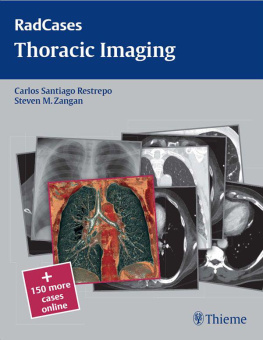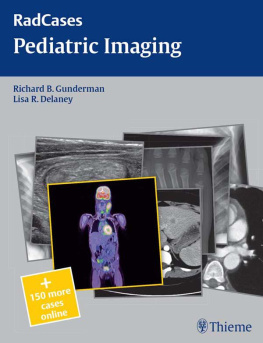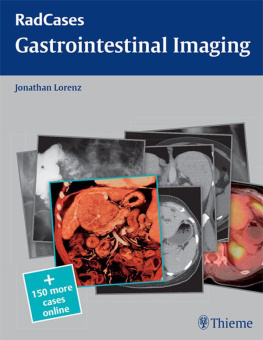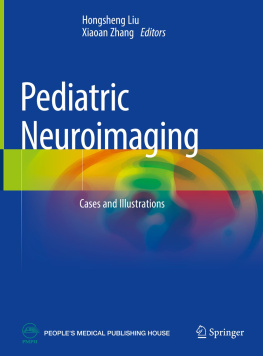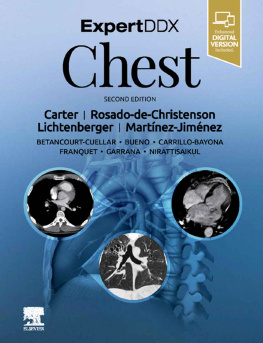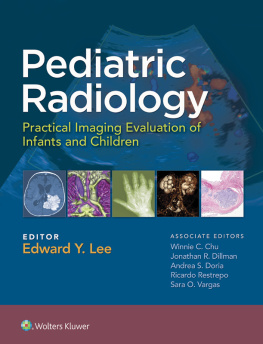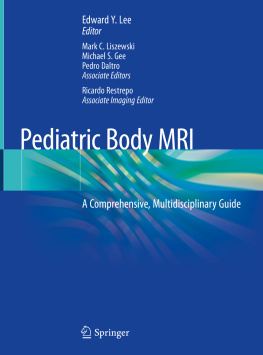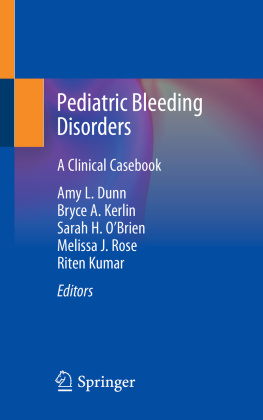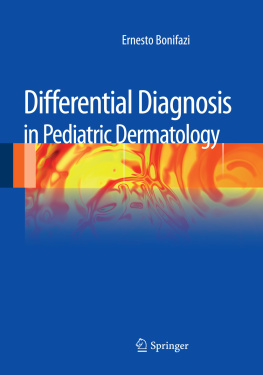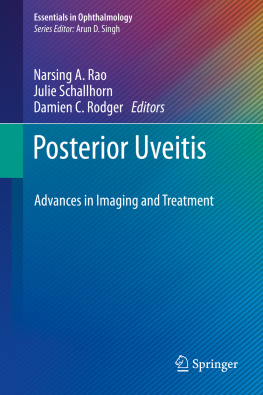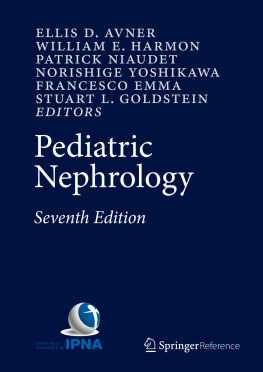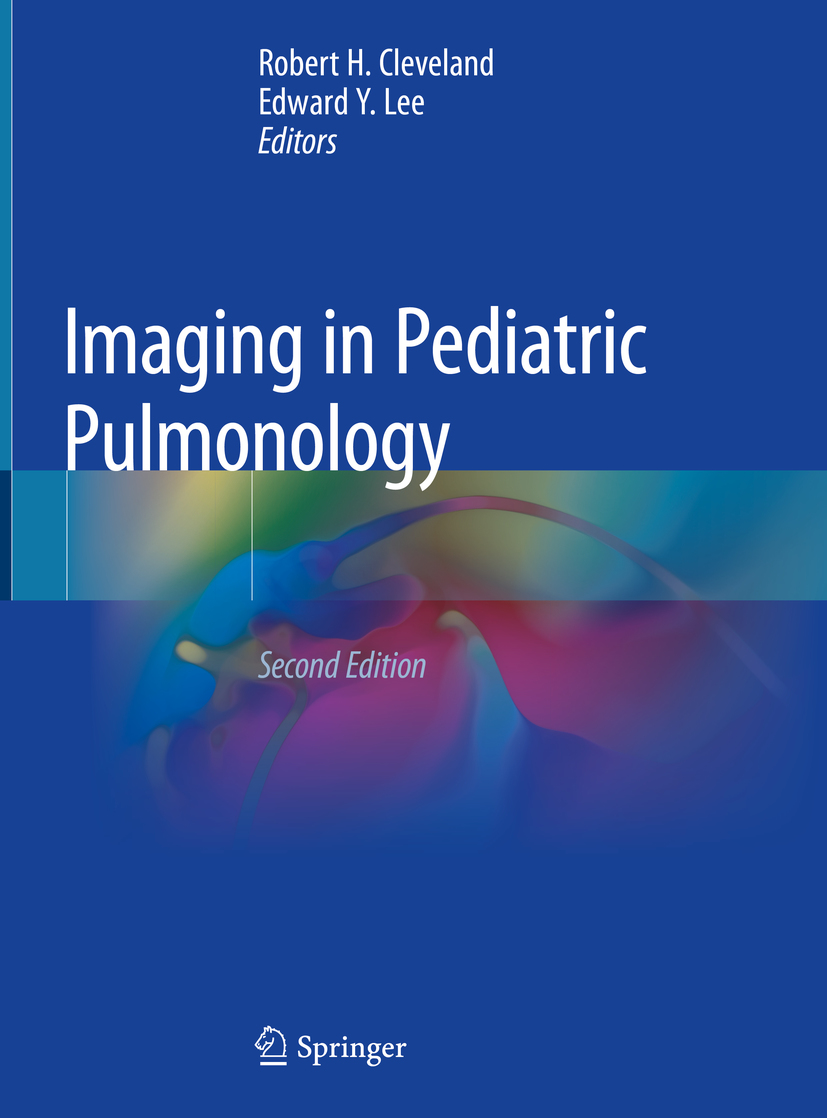Editors
Robert H. Cleveland and Edward Y. Lee
Imaging in Pediatric Pulmonology
2nd ed. 2020
Editors
Robert H. Cleveland
Department of Radiology, Harvard Medical School Boston Childrens Hospital, Boston, MA, USA
Edward Y. Lee
Department of Radiology, Harvard Medical School Boston Childrens Hospital, Boston, MA, USA
ISBN 978-3-030-23978-7 e-ISBN 978-3-030-23979-4
https://doi.org/10.1007/978-3-030-23979-4
Springer Science+Business Media, LLC
Springer Nature Switzerland AG 2020
This work is subject to copyright. All rights are reserved by the Publisher, whether the whole or part of the material is concerned, specifically the rights of translation, reprinting, reuse of illustrations, recitation, broadcasting, reproduction on microfilms or in any other physical way, and transmission or information storage and retrieval, electronic adaptation, computer software, or by similar or dissimilar methodology now known or hereafter developed.
The use of general descriptive names, registered names, trademarks, service marks, etc. in this publication does not imply, even in the absence of a specific statement, that such names are exempt from the relevant protective laws and regulations and therefore free for general use.
The publisher, the authors, and the editors are safe to assume that the advice and information in this book are believed to be true and accurate at the date of publication. Neither the publisher nor the authors or the editors give a warranty, expressed or implied, with respect to the material contained herein or for any errors or omissions that may have been made. The publisher remains neutral with regard to jurisdictional claims in published maps and institutional affiliations.
This Springer imprint is published by the registered company Springer Nature Switzerland AG
The registered company address is: Gewerbestrasse 11, 6330 Cham, Switzerland
Foreword
In pediatric radiology, whether in academic medical centers, or in private practice, the chest is the most frequently imaged part of the entire body. Millions of chest radiographs are taken across the country on infants and children, and read by radiologists of all levels of training, both in hospital and outpatient imaging sites. Adult radiologists are often called upon to read chest images from emergency departments or neonatal intensive care units. Most pediatric radiologists spend hours each week reading chest images, a task they will do their entire careers. As a result, having a well-grounded knowledge of pulmonary imaging in pediatrics is imperative for all image interpreters.
This updated text has taken on the challenge of providing this education. In the second edition of the book, Imaging in Pediatric Pulmonology , the authors cater to all possible readers. For general radiologists looking to enhance their knowledge of pediatric lung conditions, extensive information on neonatal conditions, pneumonia, and common diseases abounds. For pediatric radiologists who want to learn about rarer conditions, like plastic bronchitis, or who want to deepen their understanding of the complexities of pediatric pulmonary disease, chapters are there. The way in which the material is organized makes it easy to learn about conditions in a variety of ways. Cystic fibrosis, for instance, is discussed in its own chapter, but also in chapters on focal lung disease, interstitial lung disease, airway abnormalities, genetic lung conditions, lung transplantation, and others. This distribution of material throughout the book into carefully chosen disciplines allows readers with a specific bent to learn about disease processes in their contexts of interest.
Additionally, the authors have given readers detailed information about areas not typically covered. A whole chapter is dedicated to pleural effusions and pneumothoraces. Pulmonary lymphatic disorders, venous drainage conditions, pulmonary embolism, even incidentalomas the list goes on and on. In this broad and extensive survey of pediatric lung diseases, the authors have truly provided a comprehensive reference that should be included in any radiology library.
Dr. Robert H. Cleveland, whose career has been dedicated to pulmonary imaging, both at Massachusetts General Hospital and Boston Childrens Hospital, by this work, continues to enhance his legacy. The addition of Dr. Edward Y. Lee, a colleague at Boston Childrens Hospital, and an acclaimed author and speaker on pediatric lung imaging, only adds to the prestige of this book. New images, new techniques, and new explanations abound throughout the revised text. Truly, reviewing this updated addition to Imaging in Pediatric Pulmonary , was an honor and an education.
Stephen F. Simoneaux
Atlanta, GA, USA
Preface
Since the publication of the prior edition of this book, many advances have occurred in the performance of computed tomography (CT) and magnetic resonance imaging (MRI). For CT, examination performance times have diminished significantly, greatly enhancing the ability to perform CT on unsedated children. Possibly more important to pediatric practice, the radiation doses of CT have been significantly reduced. However, the concern of lifetime exposure to ionizing irradiation remains paramount, and therefore, the use of CT should be limited to instances where no other viable choice is available. MRI procedure times have also been shortened and resolution improved. Although this makes MRI a viable alternative or preferable imaging choice for questions of larger structures such as the central airway, cardiovascular system, lung parenchyma, and chest wall, it is still not able to accurately depict the smaller airways.
Consequently, this new edition again focuses on plain film imaging as well as advanced imaging. The material, in some instances, has been reorganized. In addition, there are three new chapters specifically addressing pediatric pulmonary embolism, thoracic MRI, and the genetics of pediatric pulmonary disorders.
The overall organization of the book remains the same with an initial chapter of clinical algorithms for the most common clinical scenarios presenting to pediatric pulmonologists or pediatricians. The branch points in the algorithms serve as references to diseases discussed elsewhere in the book. There are again several chapters dedicated to specific topics such as lung transplantation and fetal imaging.
Rather than assuming a priori knowledge or suspicion of the diagnosis, this text can lead the reader to a differential diagnosis based on clinical parameters and thus direct reading to the relevant diagnoses. If the readers know their topic of interest, the chapters are organized for easy access to a broad range of abnormalities. While radiologists may find this a new approach in organization of a textbook, clinicians hopefully find it a user-friendly imaging resource.
I would be remiss if I did not acknowledge, with much gratitude, the encouragement and assistance of the members of the New England Pulmonary Consortium who have been so much a part of my development as a pediatric pulmonary imager over the almost 40 years of our association.
Robert H. Cleveland
Boston, MA, USA


